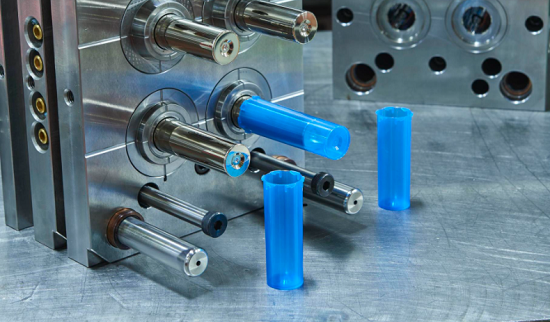Injection molding is an engineering technology, which involves transforming plastics into useful products that can maintain their original properties. The important process conditions of injection molding are the temperature, pressure and corresponding action time which affect the plasticizing flow and cooling. In this article, we are going to talk about some basics of injection molding, covering plastic injection molding temperature control, pressure control and molding cycle.

Plastic Injection Molding Basics
Temperature Control
1. Barrel temperature: the injection molding process needs to control the barrel temperature, nozzle temperature and mold temperature. The first two temperatures mainly affect the plasticization and flow of plastics, while the second one mainly affects the flow and cooling of plastics.
Every kind of plastics has different flowing temperature. The flowing temperature and decomposition temperature of the same kind of plastics are different due to different sources or brands. This is due to different average molecular weight and molecular weight distribution. The plasticizing process of plastics in different types of injection machines is also different, so the barrel temperature is not the same.
2. Nozzle temperature: the nozzle temperature is usually slightly lower than the maximum temperature of the barrel, which is to prevent the molten material from salivating in the straight through nozzle. The temperature of the nozzle should not be too low, otherwise it will cause the early solidification of the melt and block the nozzle, or the performance of the product will be affected due to the injection of the early setting material into the mold cavity.
3. Mold temperature: mold temperature has a great influence on the internal performance and apparent quality of products. The mold temperature is determined by the crystallinity of the plastic, the size and structure of the product, performance requirements, and other process conditions (melting temperature, injection speed and injection pressure, molding cycle, etc.).
Pressure Control
In the process of injection molding, pressure includes plasticizing pressure and injection pressure, which directly affects the plasticizing of plastics and the quality of products.
1. Plasticizing pressure: when the screw type injection machine is used, the pressure on the top of the screw when the melting material is rotated backward is called plasticizing pressure, also known as back pressure. This pressure can be adjusted by the relief valve in the hydraulic system. In the injection process, the plasticizing pressure does not change with the rotational speed of the screw. Increasing the plasticizing pressure will increase the melt temperature, but decrease the plasticizing speed.
In addition, increasing the plasticizing pressure can make the temperature of the melt even, the color mixture is even and the gas in the melt is discharged. In general operation, the plasticizing pressure should be determined on the premise of ensuring good product quality. The lower the plasticizing pressure, the better. The specific value varies with the type of plastic used, but it is rarely more than 20 kg / cm2.
2. Injection pressure: in current production, the injection pressure of almost all injection machines is based on the pressure exerted on the plastic by the top of plunger or screw (converted from oil pressure). The role of injection pressure in injection molding is to overcome the flow resistance of plastic from the barrel to the cavity, give the rate of filling and compact the molten material.
Molding Cycle
The time required to complete an injection molding process is called molding cycle, also known as molding cycle. It actually includes the following parts:
● Molding cycle: molding cycle directly affects labor productivity and equipment utilization. Therefore, in the production process, on the premise of ensuring the quality, the relevant time in the molding cycle should be shortened as far as possible. In the whole molding cycle, injection time and cooling time are the most important, which have a decisive impact on the quality of the products. The filling time in injection time is directly inversely proportional to the filling rate, and the filling time in production is generally about 3-5 seconds.
● The pressure holding time in injection time is the pressure time of plastics in the mold cavity, which accounts for a large proportion in the whole injection time, which is generally about 20-120 seconds (as high as 5-10 minutes for extra thick parts). Before the melting material is frozen at the gate, the holding time has an effect on the dimensional accuracy of the product, but it has no effect in the future. It is known that it depends on the material temperature, mold temperature and the size of sprue and gate.
● If the size of sprue and gate as well as the process conditions are normal, the pressure value with the smallest fluctuation range of shrinkage rate of the product shall prevail. The cooling time mainly depends on the thickness of the product, the thermal and crystalline properties of the plastic, and the mold temperature.
● The end of the cooling time should be based on the principle that the product will not change when demoulding. The cooling time is generally about 30 – 120 seconds. If the cooling time is too long, it will not only reduce the production efficiency, but also cause demoulding difficulties for complex parts, and even produce demoulding stress when forced demoulding. The other time in the molding cycle is related to the continuity and automation of the production process and the degree of the continuity and automation.
